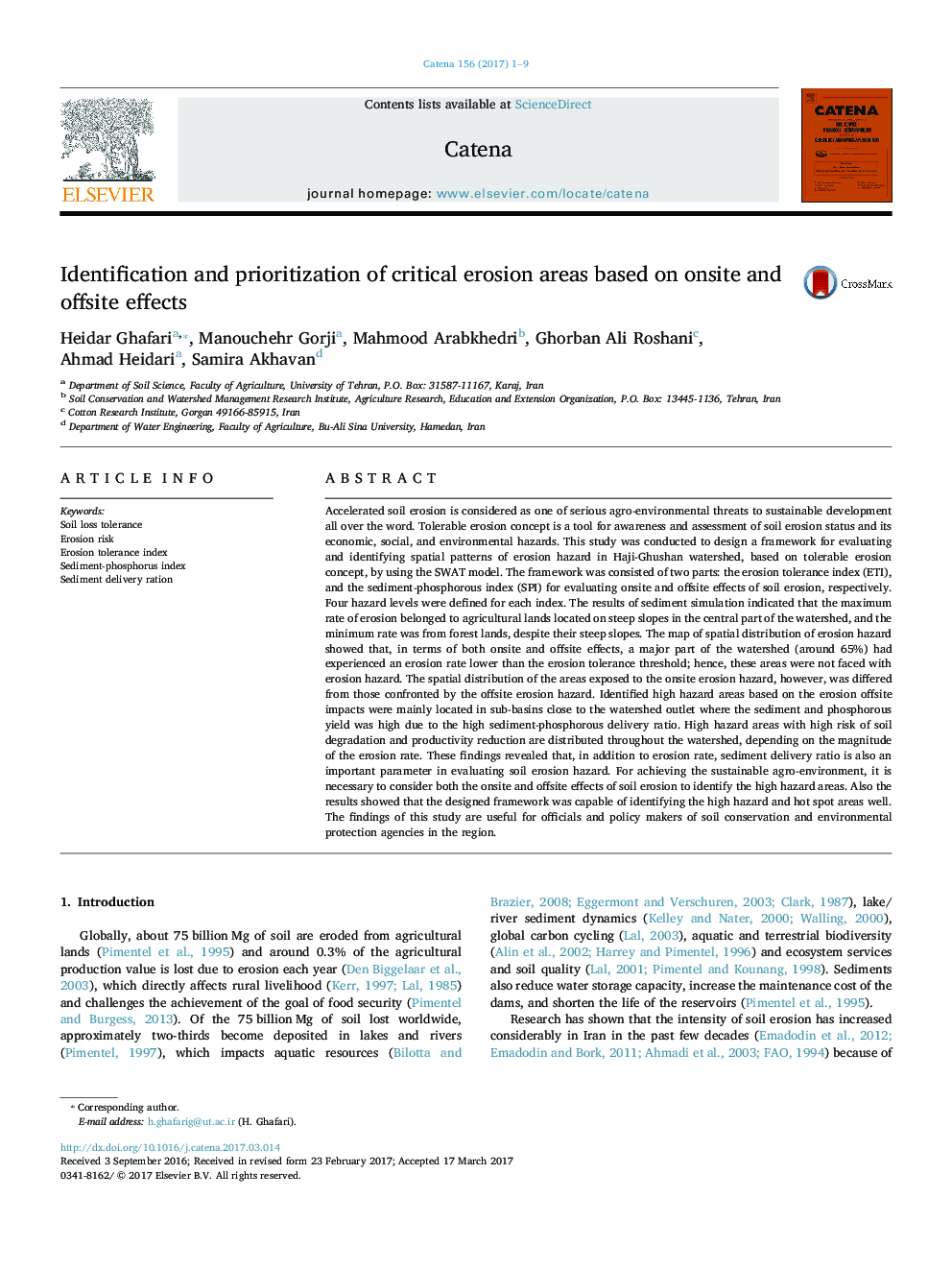| Article ID | Journal | Published Year | Pages | File Type |
|---|---|---|---|---|
| 5769976 | CATENA | 2017 | 9 Pages |
Abstract
Accelerated soil erosion is considered as one of serious agro-environmental threats to sustainable development all over the word. Tolerable erosion concept is a tool for awareness and assessment of soil erosion status and its economic, social, and environmental hazards. This study was conducted to design a framework for evaluating and identifying spatial patterns of erosion hazard in Haji-Ghushan watershed, based on tolerable erosion concept, by using the SWAT model. The framework was consisted of two parts: the erosion tolerance index (ETI), and the sediment-phosphorous index (SPI) for evaluating onsite and offsite effects of soil erosion, respectively. Four hazard levels were defined for each index. The results of sediment simulation indicated that the maximum rate of erosion belonged to agricultural lands located on steep slopes in the central part of the watershed, and the minimum rate was from forest lands, despite their steep slopes. The map of spatial distribution of erosion hazard showed that, in terms of both onsite and offsite effects, a major part of the watershed (around 65%) had experienced an erosion rate lower than the erosion tolerance threshold; hence, these areas were not faced with erosion hazard. The spatial distribution of the areas exposed to the onsite erosion hazard, however, was differed from those confronted by the offsite erosion hazard. Identified high hazard areas based on the erosion offsite impacts were mainly located in sub-basins close to the watershed outlet where the sediment and phosphorous yield was high due to the high sediment-phosphorous delivery ratio. High hazard areas with high risk of soil degradation and productivity reduction are distributed throughout the watershed, depending on the magnitude of the erosion rate. These findings revealed that, in addition to erosion rate, sediment delivery ratio is also an important parameter in evaluating soil erosion hazard. For achieving the sustainable agro-environment, it is necessary to consider both the onsite and offsite effects of soil erosion to identify the high hazard areas. Also the results showed that the designed framework was capable of identifying the high hazard and hot spot areas well. The findings of this study are useful for officials and policy makers of soil conservation and environmental protection agencies in the region.
Keywords
Related Topics
Physical Sciences and Engineering
Earth and Planetary Sciences
Earth-Surface Processes
Authors
Heidar Ghafari, Manouchehr Gorji, Mahmood Arabkhedri, Ghorban Ali Roshani, Ahmad Heidari, Samira Akhavan,
